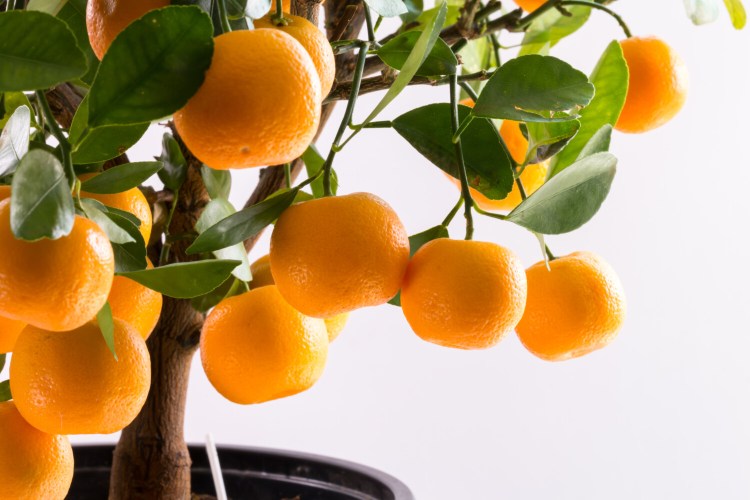We are now growing an orange tree in our house. It hasn’t produced any flowers or oranges, as yet, but we have high hopes.
This isn’t the type of orange tree grown commercially in Florida. It’s a Calamondin orange we saw a couple months ago at Skillins in Falmouth, and I succumbed to temptation.
It is about a foot tall now and will grow to a maximum of 2 feet tall and maybe a foot wide.
I should have read more about this orange before I bought it. The one we have came with no fruit or flowers, and even though the store had some of the same species that had both, I wanted to enjoy the entire process of fruit production. The instructions inform me, however, that the tree sometimes will show its fragrant white blossoms, green fruit and ripe fruit all at the same time.
The orange should do well in a typical Maine home. While it wants warm temperatures during the day, it likes its nights in the 50s, about the temperature many locals keep their houses when they are snuggled under layers of quilts and blankets.
The Calamondin prefers a bright room, with at least four hours of sunlight every day. The tree needs to dry out slightly between waterings, although it helps to mist the leaves often. It should be fertilized with a typical liquid fertilizer in early spring, early summer and late fall. Once all danger of frost is past, I’ll take my Calamondin outside for the summer.
You can eat the fruit (including the peel and seeds), which grows to be only about an inch in diameter. But bear in mind, it is incredibly sour, so is best used in preserves, cocktails or other recipes. We’ll have to wait, though, as it takes the fruit about a year to ripen.
My wife Nancy and I have a couple other fruit trees that have never produced fruit.
One is a banana with variegated leaves – green and reddish brown – that we bought at a grocery store a decade ago. It is about 4 feet tall, stays in a living room corner in the winter and heads out to the patio for the summer. Though we have never seen flowers or fruit on the plant, we like the looks of the leaves.

These luscious figs grew in Scarborough. (Maine Gardener columnist Tom Atwell is still working on it.) Jill Brady/Staff Photographer
We also have a fig tree that is about 6 feet tall and has gorgeous leaves in summer. We bought it from Pinetree Garden Seeds in New Gloucester a few years ago. And while other reporters for these pages have written about people in Scarborough and the Oxford County town of Sweden who have succeeded in producing fruit, so far we have had nothing but hopes.
Alongside the Calamondin orange we bought, Skillins also had dwarf lemons and limes for sale, citrus fruits that would require similar care. Other nurseries also sell such trees.
The most popular varieties for growing indoors are Meyer lemons and Kaffir limes. Like the Calamondin oranges, these varieties are self-pollinating, which is very important if you’re trying to grow tropical fruits inside a Maine home. Presumably, you’ve no house bees, but you could cross pollinate plants yourself if you had two of them.
Olives also can be grown as a houseplant, and we bought one early this spring from Pinetree. Apparently, they are more challenging than citrus fruits. I’ll let you know. Olive trees must be placed outdoors for part of the year because to stimulate flowering, they need the temperature to drop below 50 degrees. Put the olive tree outside in a sheltered area – away from wind and bright sunlight – for a week or two before moving it into an area of full sun. In the fall when it’s time to bring it back inside, first move it to a shady outdoors area for about a week where it can get used to less sun. Then bring it inside, to the brightest room you have.
You’ll still need to shop for fruit at the grocery store. While you get some fruit from your houseplants, it won’t be much – nothing like the yield from vegetables and trees that thrive outside in Maine weather, such as apples, pears and peaches.
But it will be fun, and that is just as important.
Tom Atwell is a freelance writer gardening in Cape Elizabeth. He can be contacted at: tomatwell@me.com.
Comments are not available on this story.
Send questions/comments to the editors.


